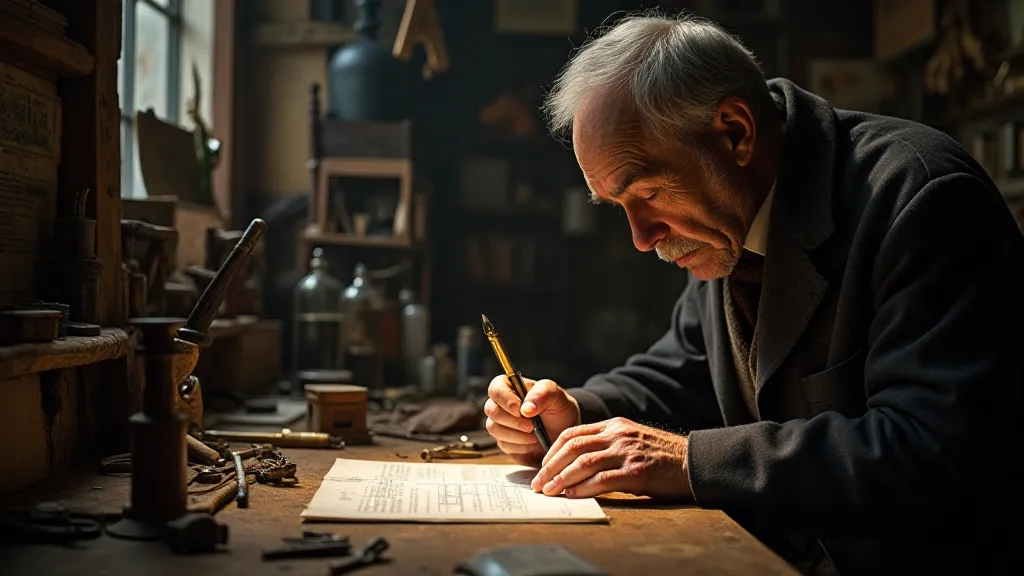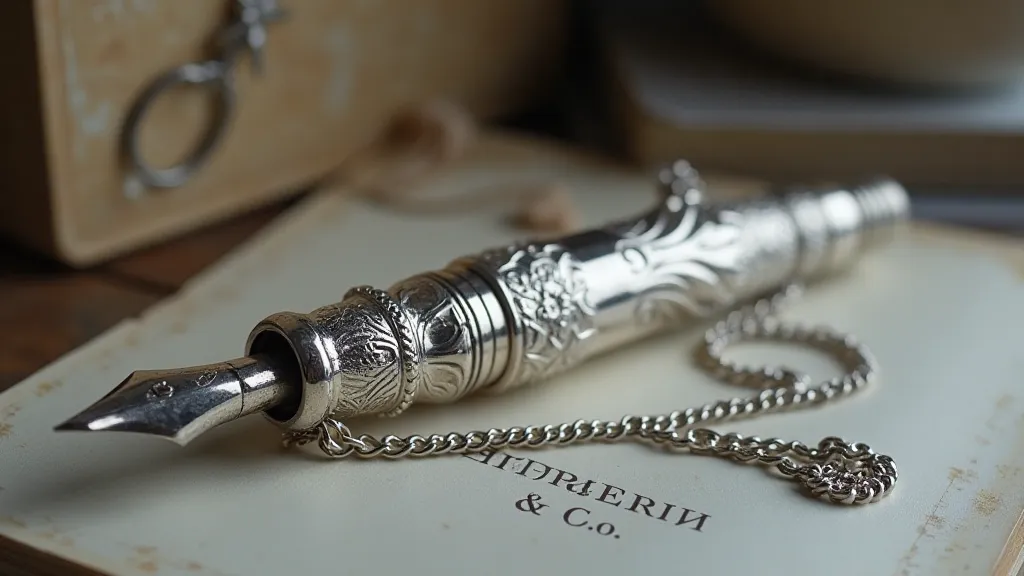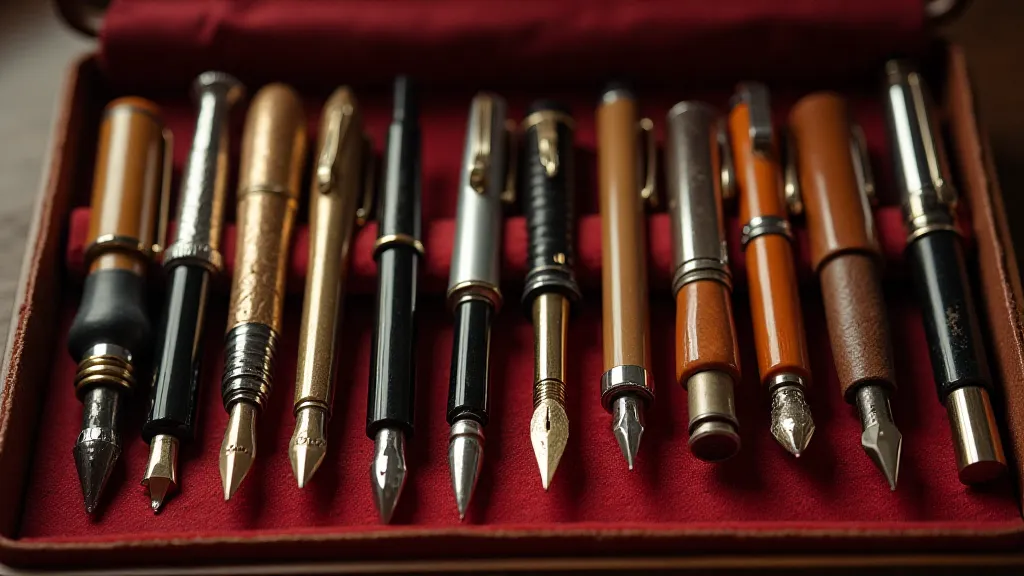A Chronicle of Craft: Tracing the Legacy of Pen Making Families
The smooth glide of a nib across paper, the satisfying click of a lever, the weight of history held in your hand – these are the sensations that draw collectors and enthusiasts to antique pens. But beyond the beauty of the finished product lies a story often untold: the story of the families and workshops whose dedication, ingenuity, and artistry shaped the very instruments we cherish today. This isn't simply a history of pen brands; it’s a chronicle of craft, a testament to the enduring power of family legacies interwoven with the art of writing.
For centuries, pen making wasn's a corporate endeavor. It was the domain of skilled artisans, often organized around family workshops where knowledge was passed down through generations. These families weren't just manufacturing pens; they were cultivating a tradition, honing skills that demanded a lifetime of practice. The pride in their work extended beyond financial reward; it was a matter of honor, of carrying forward a heritage of excellence.
The Gillott Family: Masters of the Steel Nib
Let's begin with the Gillott family, whose name is almost synonymous with early steel nibs. Initially clockmakers in London, the Gillotts transitioned to pen nib production in the mid-19th century. Richard Gillott, the patriarch, patented a method of mass-producing steel nibs, revolutionizing the writing instrument industry. Before Gillott, steel nibs were often crude and unreliable; Richard’s innovations – particularly his "Prince Albert" nib, with its distinctive curvature – set a new standard for quality and smoothness.

The business continued to thrive, and later generations further refined the processes, developing a wide range of nib styles catering to different writing preferences. What's particularly remarkable is the commitment to precision. Each nib was meticulously stamped, filed, and polished – a process that demanded immense skill and attention to detail. A Gillott nib wasn’t just a writing tool; it was a statement of quality, a mark of distinction. The legacy isn't just about the technological advancement; it's about the family’s unwavering dedication to a standard of excellence that resonated throughout the Victorian era.
Waterman: From Parisian Watchmaker to Pen Empire
Moving to France, we encounter the story of the Waterman family. Louis-Olivier Waterman, initially a watchmaker, found himself frustrated with the poorly made fountain pens of his time. This frustration fueled his ambition: he would create a superior writing instrument. His early designs were revolutionary, incorporating a unique "twist-fill" mechanism – a significant improvement over the cumbersome fillers of the day.
While Waterman initially faced skepticism and legal battles – he was famously sued by Lewis Edson Waterman, another early fountain pen innovator, a case that ultimately shaped patent law – he persevered. The company, initially a small workshop in Paris, grew rapidly, establishing a global presence and becoming a household name. The hallmark of Waterman pens was – and remains – a commitment to elegance and functionality. The focus wasn't simply on creating a pen that wrote; it was about creating an object of beauty, a pleasure to hold and use.
The later generations of Watermans continued to innovate, introducing new filling systems and materials, all while upholding the family’s reputation for quality and style. The story serves as a powerful reminder that innovation often arises from dissatisfaction – a desire to improve upon the status quo.
Perry & Co.: Sheffield’s Silver Pen Pioneers
In Sheffield, England, the Perry & Co. family carved a unique niche in the world of writing instruments. Unlike the Gillotts or Watermans, whose focus was largely on nibs or filling mechanisms, the Perrys specialized in exquisitely crafted silver pens. The family’s background in the Sheffield silver industry – a renowned center for cutlery and silver production – perfectly positioned them to create pens that were both functional and works of art.

The pens weren't just silver-plated; they were crafted from solid silver, often embellished with intricate engravings, chased designs, and applied decorative elements. Many incorporated nibs from renowned manufacturers like Gillott, demonstrating a collaboration between specialists. These were luxury items, treasured possessions passed down through generations. The Perry & Co. pens represent a fascinating intersection of writing instrument technology and the artistry of traditional silverwork.
Lamy: A Post-War Triumph
Our journey wouldn't be complete without mentioning the Lamy family. While their history isn't as deeply rooted in the 19th-century artisanal landscape, their contribution to pen design and manufacturing is undeniable. Josef Lamy, initially involved in stationery supplies, recognized the potential for a modern, stylish pen. His innovative designs – particularly the "2000" model – broke with the traditional, often overly ornate, aesthetic of fountain pens.
The Lamy 2000's clean lines, distinctive clip, and emphasis on functionality resonated with a generation seeking modern elegance. The family’s commitment to quality materials and meticulous manufacturing processes quickly earned Lamy a reputation for excellence. What's remarkable is how Lamy managed to achieve both style and reliability – qualities often at odds in the world of luxury goods.
The Lamy story shows us that legacy isn’t just about tradition; it’s about innovation, adaptability, and the ability to anticipate the needs of consumers. It underscores that a family's passion for quality can manifest in various ways across generations and eras.
The Enduring Legacy
The stories of the Gillott, Waterman, Perry & Co., and Lamy families, among countless others, reveal a fascinating tapestry of skill, dedication, and innovation. They remind us that antique pens are more than just writing instruments; they are tangible links to a rich and vibrant past. Collecting antique pens isn't just about acquiring beautiful objects; it's about connecting with the stories of the families who created them, and appreciating the enduring legacy of craftsmanship. The feel of a well-made nib, the weight of solid silver, the satisfying click of a lever – these are echoes of a time when pen making was a true art form, a tradition passed down through generations of talented and passionate individuals.

Each pen holds a silent testament to a family’s commitment, an echo of their passion. And by appreciating these objects, we keep their stories – and the art of pen making – alive.





